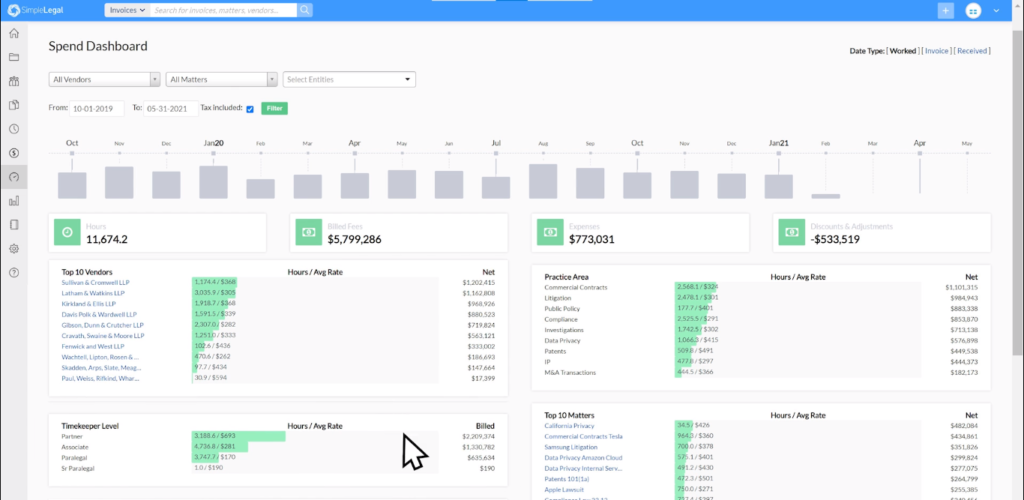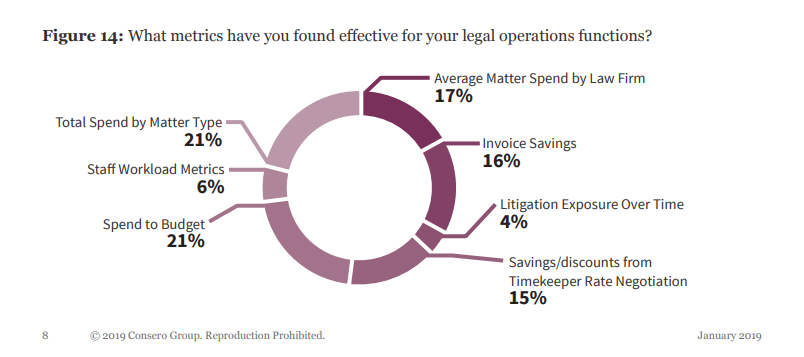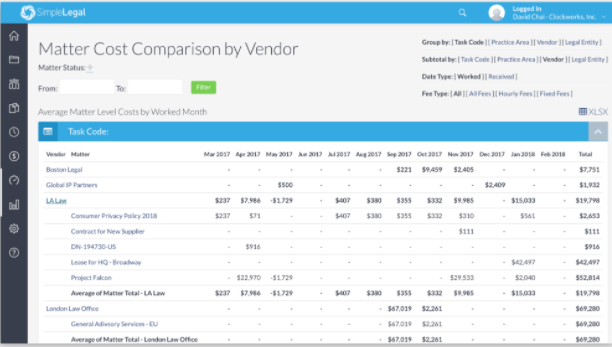Spend analysis 101: Maximizing legal spend for legal ops

Up to 69% of businesses expect legal teams to play a role in strategy, objectives, and leadership. This means that now, more than ever, legal teams need to speak in numbers. That’s fewer assumptions and more data tracking, analysis, and spend reporting because a good spend analytics report can be the difference between getting an increased budget for your department and getting your budget slashed.
Not only that, legal teams should have all of the information possible to help them make smarter decisions. Selecting the law firm that strikes a good balance between cost and quality of work, for example, or reassigning tasks that demand fewer skills to junior in-house staff.
If you want to ensure your law firm delivers the best value for legal spend, conducting spend analysis on a regular basis is a must.
What is spend analysis for legal departments?
Spend analysis is the process of collecting, examining, and interpreting legal spend to understand exactly what you are spending on and where. Spend analysis will let you track spend like accrual fees, timekeeper rates, spend by vendor, and more across any given period of time—weeks, months, or even years.
With the long-term data you collect with spend analysis, you’ll be able to measure not just the amount you spent but the quality of the work in return for that spend and be able to make smart decisions based on that. For example, choosing a more expensive firm over a cheaper one, where the benefits outweigh the costs in the long run.
Why legal spend analysis is important
A legal spend analysis is a must for any legal ops team that wants to be armed with data to make more informed decisions and be prepared to prove the department’s value to the company as a whole.
For example, you’ll be able to benchmark metrics like win rates, estimates versus actual spend, spend by practice area, in-house versus outside counsel spend, and more.
With this data, you can then:
- Better measure outside counsel performance based on win rate, unbilled estimates versus actual amounts invoiced, level of satisfaction, etc.
- Identify all work done in-house, the associated spend, and opportunities to re-allocate tasks to the best value providers.
- Predict future expenses and reduce costs like hourly rates for a law firm where you could use in-house counsel or staff instead.
- Create better opportunities for collaboration with other departments like finance, for example, thanks to in-depth spend reporting and improved forecasting.
- Have data-driven conversations that influence decision-making with the stakeholders of your company.
Ultimately, spend analysis will help you identify places where your legal team can improve, both in cost savings and in choosing the right partners.
How to do spend analysis for your legal department
Many legal operations departments put off spend analysis because they don’t know where to begin.
If you are just getting started, here’s a five-step process to do spend analysis the right way.
1. Identify what you want to achieve with spend analysis
Identifying the main objective will help make sure you focus on analyzing the right data instead of wasting resources digging into meaningless info that doesn’t help you move your department forward.
To figure out your goal, think about your company and legal department’s current pain points and also answers that could move the needle for you.
Some good prompts to help you decide your goal:
- What unplanned spend event happened?
- Why did it happen?
- What will happen if it’s not corrected?
- What data do you need to correct it?
Let’s run through an example:
- What unplanned spend event happened? We spent 30% above our budget for outside law firms in the past year.
- Why did it happen? Our department didn’t have the time to handle the work in-house.
- What will happen if it’s not corrected? We’ll probably spend another 30% above budget this year.
- What data do you need to correct it? Figure out what tasks are currently done by in-house versus outside counsel and the cost of keeping experts staffed in-house versus hiring outside firms.
From this example, we can create the main goal; to reduce outside counsel costs. And a subgoal to understand what tasks are being done by whom.
2. Identify where spend is going, collect and organize it
You’ll need to identify what you’ve been spending on, collect it in a central database, and organize it for analysis.
If you use an e-Billing system, this step is as easy as pulling up your spend dashboard and looking at the report.

But some legal teams still don’t have centralized reports like this one for spend. In cases like this, you’ll need to gather your previous month’s paper invoices and record them in a common format in a central database.
Start with invoices for vendors, timekeepers, tech, accruals, etc. Consider asking your vendors for copies if you can no longer find yours.
You’ll record vendor names, timekeeper rates, accruals, compliance fees, and just about all the data you have in an organized manner.
3. Cleanse the data for accuracy
Duplicates, errors, and outdated data will potentially skew your analysis and make it inaccurate. That’s why you need to cleanse your data for completeness, preciseness, and relevance.
Check through your data for things like duplicated invoices as a result of errors and misspelled vendor names (e.g., “Sulivan and Cromwell” instead of “Sullivan and Cromwell”), which would record as two different vendors.
4. Categorize what’s left
Group your spend data by category to make it easier to find what you are looking for.
Simply sort your database to put similar spend categories together.
A few ideas you could categorize by are matter type, vendor, timekeeper rates, and so on.
5. Analyze the data you have
You’ll need to analyze your data to see not just where your money is being spent but also the areas that provide the most positive outcomes and areas that need improvement. This is how you can tell whether you are meeting the goals you’ve set for spend analysis.
Start by choosing what metrics you want to benchmark and analyze. For example, 21% of legal ops teams say “Spend to Budget” is a useful metric they’ve analyzed.

But remember that what you choose to analyze should be related to your goals.
To analyze your data, you could conduct data analysis manually via spreadsheets and databases, where you sort the sheets based on specific values and compare them if you are handy with Regex and Excel formulas. But that way is complicated and time-consuming. A better way is to use spend management software that makes it as easy as a few clicks to analyze and report.
For example, if you wanted to understand a more expensive law firm’s performance compared to cheaper firms using a spend management solution, you would simply pull up the Matter Cost by Vendor report from the Matter Management dashboard.

This way, you can proactively allocate resources and control costs more efficiently in your budgeting.
Spend analysis is easier with legal spend management software
Spend analysis is necessary if you care about value for your legal department, but manual spend analysis is complex.
Spend management software makes it easy to automate everything from intake to approval, enforcing billing guidelines and discounts, so you don’t have to worry about errors in your data. Get access to a spend dashboard and gather high-level insights in minutes and even drill down for more information in a few clicks.

